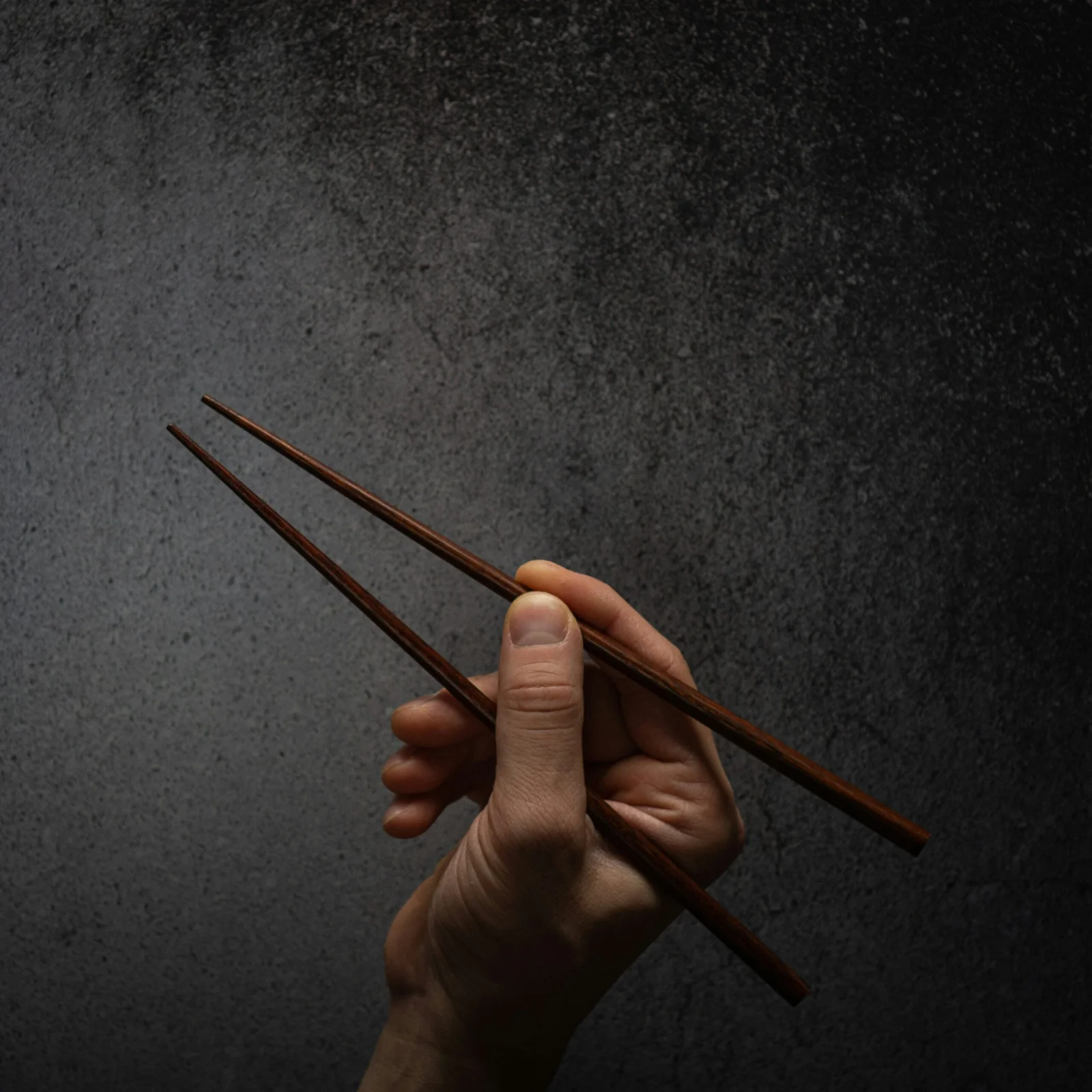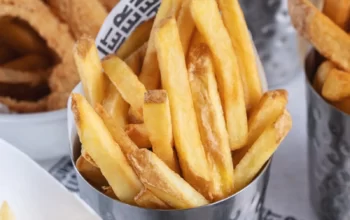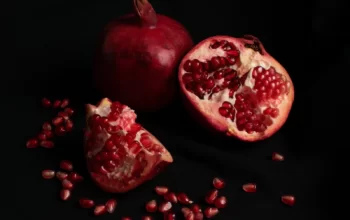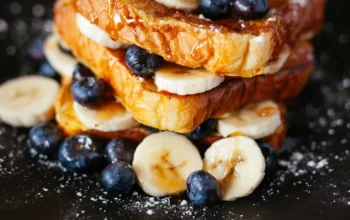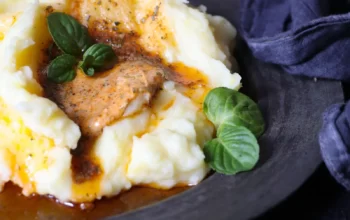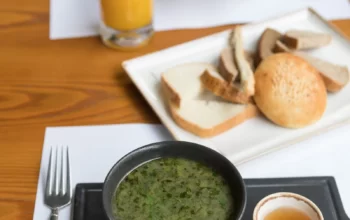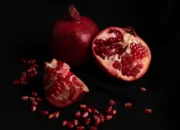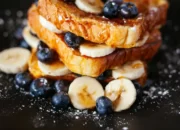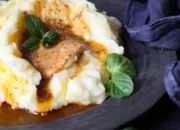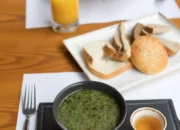middleportal.com – First and foremost, it’s important to choose the right chopsticks for you. Chopsticks come in various materials such as bamboo, wood, metal, or even plastic. Each material has its own advantages and disadvantages, so it’s crucial to find the ones that feel comfortable in your hands. Some people prefer the lightweight feel of bamboo chopsticks, while others may opt for the sturdiness of metal chopsticks.
Once you have chosen your chopsticks, it’s time to get familiar with the basic grip. Hold one chopstick between your thumb and index finger, just like you would hold a pencil. Place the other chopstick between your thumb and middle finger, using your ring finger as support. This grip allows for better control and maneuverability.
Now that you have the grip down, it’s time to practice your dexterity. Start by picking up larger pieces of food, such as tofu or slices of cucumber. Focus on using your thumb and index finger to control the top chopstick, while the bottom chopstick remains stationary. As you become more comfortable, challenge yourself by picking up smaller and more delicate items, like grains of rice or sesame seeds.
It’s important to remember that chopsticks are not just for picking up food, but also for transferring it to your mouth. When bringing food to your mouth, avoid using the top chopstick as a shovel. Instead, bring the bottom chopstick closer to your mouth and use it as a lever to guide the food into your mouth.
Another tip to keep in mind is to avoid crossing your chopsticks. In many Asian cultures, crossing chopsticks is seen as a symbol of death and bad luck. Instead, place your chopsticks parallel to each other or rest them on a chopstick rest if one is provided.
Lastly, don’t be afraid to ask for help or observe others. If you’re dining at an Asian restaurant, chances are there will be people around you who are skilled in using chopsticks. Take a moment to observe their technique and ask for guidance if needed. Most people are more than happy to share their knowledge and help you improve your chopstick skills.
With practice and patience, you’ll soon master the art of chopsticks. So go ahead, embrace the elegance and tradition of Asian dining, and enjoy your meal with confidence!
Setting the Stage
Before diving in, ensure you have the right tools. Most restaurants will provide disposable chopsticks, but some offer reusable pairs. These reusable varieties can be made of wood, bamboo, metal, or even ivory. They may come blunt or pointed, depending on the culture.
When it comes to using chopsticks, it’s important to understand the cultural significance and etiquette associated with them. In many Asian countries, chopsticks are not just a utensil for eating; they are a symbol of tradition, respect, and harmony. Therefore, knowing how to properly handle and use chopsticks is not only practical but also a way to show respect for the culture you are experiencing.
To begin with, let’s talk about the different types of chopsticks. The most common type is the disposable chopsticks, which are usually made of bamboo or wood. These chopsticks are designed for single-use and are often found in fast-food restaurants or takeout places. While they are convenient, they are not the most environmentally friendly option.
On the other hand, reusable chopsticks are a more sustainable choice.
These chopsticks can be made from a variety of materials, each with its own unique characteristics. Wooden chopsticks are popular for their natural and rustic appeal, while bamboo chopsticks are known for their lightweight and durable nature. Metal chopsticks, often made of stainless steel, are sleek and easy to clean. Lastly, there are even chopsticks made from ivory, although these are rare and often considered a luxury item.
When it comes to the shape of chopsticks, there are two main types: blunt and pointed. Blunt chopsticks are typically used in China and Korea, where they are considered more practical for picking up larger pieces of food. Pointed chopsticks, on the other hand, are commonly used in Japan and are ideal for delicate tasks such as picking up individual grains of rice or small pieces of sushi.
Now that we have covered the different types and shapes of chopsticks, let’s move on to the proper way of holding them. The key to using chopsticks effectively is to hold them towards the end, allowing for better control and precision. Place the first chopstick between your thumb and index finger, resting it on the base of your thumb. Then, hold the second chopstick with your middle finger and use your index finger to move it up and down. The two chopsticks should meet at the same point, creating a pincer-like grip.
It’s important to note that chopsticks should never be crossed or used to stab food. Instead, they are meant to be used in a gentle and graceful manner. When not in use, rest your chopsticks on the chopstick rest or on the edge of your plate. Avoid sticking them vertically into a bowl of rice, as this is considered impolite and reminiscent of funeral rituals.
By understanding the different types of chopsticks, their cultural significance, and the proper way of using them, you can fully immerse yourself in the dining experience and show respect for the traditions of the culture you are exploring. So, the next time you find yourself at a restaurant that offers chopsticks, embrace the opportunity to try something new and enjoy the art of eating with these elegant utensils.
The Proper Grip
Mastering the proper grip is the first step to becoming proficient with chopsticks. It’s all about finding the right balance between stability and maneuverability.
The Stable Base: Place one chopstick between the base of your thumb and the pad of your index finger, resting it comfortably on the crook of your ring finger. This chopstick remains relatively stationary throughout the process.
The Moving Partner: The second chopstick acts like a pincer. Hold it like a pencil, balanced on the tip of your middle finger and gripped between your thumb and index finger. This is the chopstick you’ll be maneuvering.
Once you have established the stable base and the moving partner, it’s important to understand the dynamics of the grip. The stable base provides a solid foundation, allowing you to control the movement of the chopsticks. The moving partner, on the other hand, is responsible for the precision and dexterity required to pick up food.
When using chopsticks, it’s essential to maintain a relaxed grip. Squeezing the chopsticks too tightly can lead to fatigue and make it difficult to manipulate them effectively. Instead, aim for a firm but gentle hold, allowing your fingers to move freely and effortlessly.
As you begin to practice using chopsticks, it’s natural to feel a bit clumsy or uncoordinated at first. But with time and patience, your grip will become more refined, and you’ll develop a natural rhythm and flow in using chopsticks.
Remember, the proper grip is just the foundation. It’s also crucial to position your hand correctly and understand the proper technique for picking up food. With practice and perseverance, you’ll soon be able to enjoy the art of dining with chopsticks, effortlessly picking up even the smallest morsels of food.
Once you have mastered the basic technique of using chopsticks, you can move on to the more advanced art of picking up food. This involves not only picking up the food, but also doing it with finesse and style. It is a skill that can impress your dining companions and make your dining experience more enjoyable.
One important aspect of the art of picking up food is the way you hold your chopsticks. The position of your fingers and the angle at which you hold the chopsticks can make a big difference in how well you are able to pick up food. Make sure that you hold the chopsticks firmly, but not too tightly. This will give you better control over the chopsticks and make it easier to pick up food.
Another important aspect of the art of picking up food is the way you approach the food. Take your time and observe the food before you attempt to pick it up. Look at the size and shape of the food and think about the best way to approach it. Sometimes it may be easier to pick up the food from one side rather than the other, or to use a different technique altogether.
As you become more skilled in the art of picking up food, you can start experimenting with different techniques and styles. For example, you can try using your chopsticks to create a bridge and scoop up food, or you can use them to roll food onto your plate. You can also try using your chopsticks to pick up multiple pieces of food at once, or to pick up food that is slippery or difficult to grasp.
Remember, the art of picking up food is not just about technique, but also about enjoying the process. Take your time and savor each bite of food. Appreciate the flavors and textures, and the effort that went into preparing the meal. By mastering the art of picking up food, you can elevate your dining experience to a whole new level.
Chopstick Etiquette
Using chopsticks comes with its own set of etiquette rules. Here are a few important guidelines to keep in mind:
Don’t Stab: Chopsticks are for picking up, not spearing, your food. Avoid using them as a skewer. This not only helps to maintain the integrity of your food but also prevents any accidents or injuries that may occur from using chopsticks inappropriately. Remember, the purpose of chopsticks is to delicately grasp your food, allowing you to savor each bite.
Don’t Rub: Chopsticks are not for cleaning each other. If splintering occurs, politely request a new pair. It is important to treat your chopsticks with care and respect. Rubbing them together can be seen as disrespectful or unhygienic, as it may imply that the chopsticks are dirty or of poor quality. If you notice any issues with your chopsticks, it is best to politely ask for a replacement rather than attempting to fix them yourself.
Don’t Point: Pointing with chopsticks is considered rude in some cultures. Use your words instead. Pointing with chopsticks can be seen as impolite or confrontational, as it may resemble pointing fingers. Instead, if you need to indicate something or draw attention to a specific item, it is best to use verbal communication or gestures that are culturally appropriate. This shows respect and consideration for those around you.
Rest Them Properly: When taking a break, place your chopsticks on a chopstick rest or lay them parallel on your plate. Avoid sticking them upright in your food. Properly resting your chopsticks not only keeps them clean and prevents them from rolling off the table but also shows that you are mindful of good table manners. Placing them on a chopstick rest or laying them parallel on your plate is a sign of respect and consideration for the food and the dining environment.
Use Chopstick Sleeves: In some formal dining settings, you may be provided with chopstick sleeves. These sleeves are used to cover the tips of your chopsticks when you are not using them. This practice helps to maintain cleanliness and hygiene, especially when dining with others. When using chopstick sleeves, be sure to slide them on before and after each use, ensuring that the tips of your chopsticks are always covered when not in use.
Practice Proper Hand Placement: When using chopsticks, it is important to hold them correctly. Place one chopstick between your thumb and index finger, and use your middle finger to support it. Hold the other chopstick between your index and middle fingers, and use your thumb to support it. This technique allows for greater control and precision when picking up food. It may take some practice to master, but once you get the hang of it, you’ll be able to enjoy your meal with ease.
By following these chopstick etiquette guidelines, you can enhance your dining experience and show respect for the cultural traditions associated with using chopsticks. Whether you are dining at a restaurant or enjoying a meal at home, practicing proper chopstick etiquette is a thoughtful way to engage with the food and the culture it represents.
If you want to truly impress your dining companions and elevate your chopstick skills to a whole new level, it’s time to delve into the world of advanced techniques. These techniques not only showcase your dexterity but also enhance your overall dining experience. One such technique is the art of flipping noodles. Instead of struggling to twirl your noodles around your chopsticks or clumsily cutting them with a knife and fork, you can master the skill of flipping them effortlessly from the bowl to your mouth. Not only does this technique make for a visually stunning display, but it also ensures that you enjoy every strand of your noodles without any mess or fuss.
Another advanced technique that can leave your dining companions in awe is the ability to delicately separate foods. Whether it’s separating the layers of a steamed dumpling or gently prying apart the petals of a flower-shaped vegetable garnish, this skill demonstrates both precision and finesse. Not only does it showcase your mastery of chopsticks, but it also allows you to savor each component of your dish individually, appreciating the flavors and textures in a way that is simply not possible with a fork or spoon.
Now, you may be wondering how you can acquire these advanced chopstick skills. Thankfully, in this digital age, there are numerous online tutorials and videos available that can guide you through the process step by step. These tutorials break down each technique into manageable stages, providing clear instructions and visual demonstrations to help you master the art of flipping noodles and delicately separating foods. With practice and patience, you’ll soon find yourself effortlessly executing these advanced techniques, impressing not only your dining companions but also yourself.
So, if you’re ready to take your chopstick game to the next level and leave a lasting impression at the dining table, it’s time to embrace these advanced techniques. With a little dedication and the right guidance, you’ll soon be flipping noodles and delicately separating foods with the grace and precision of a true chopstick connoisseur. So why wait? Start your journey towards chopstick mastery today and unlock a whole new world of dining experiences.
Embrace the Cultural Experience
Using chopsticks is more than just a way to eat; it’s a cultural experience. Slow down, savor the flavors, and appreciate the unique dining style that chopsticks offer. By embracing the cultural aspects of chopstick dining, you’ll enhance your enjoyment of delicious Asian cuisine.
When you hold a pair of chopsticks, you are not just holding utensils; you are holding a piece of history. Chopsticks have been used in East Asia for thousands of years and are deeply rooted in the region’s traditions and customs. They symbolize harmony, balance, and respect for nature. The act of using chopsticks is an art form in itself, reflecting the grace and elegance of Asian culture.
As you sit down to a meal with chopsticks in hand, take a moment to observe your surroundings. Notice the intricate design of the chopsticks, the delicate patterns on the porcelain plates, and the soothing ambiance of the restaurant. Each element has been carefully chosen to create a harmonious dining experience.
When using chopsticks, remember to be mindful of your movements. Unlike a fork or spoon, chopsticks require a gentle touch and precise control. Take your time to pick up each morsel of food, appreciating its texture and flavor. Allow yourself to fully immerse in the dining experience, letting go of any distractions and focusing solely on the food in front of you.
Furthermore, using chopsticks encourages a sense of community and sharing. In many Asian cultures, meals are often served family-style, with everyone reaching for dishes from the center of the table. This communal style of dining fosters a connection between diners, creating a warm and inviting atmosphere.
With these tips and a little practice, you’ll be wielding chopsticks with confidence and enjoying the full experience of Asian cuisine. So go ahead, grab those chopsticks and dig in!
